

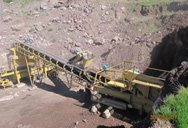
Cement Manufacturing Technology; Grinding Milling Systems; Cement Kiln Process Chemistry; Cement Kiln Refractories; Cement Factory Maintenance; Cement Factory Quality Control; White Cement Manufacturing Technology; Cement Kiln Pyroprocessing; Selecting and using raw materials for cement manufacture; Alternative fuels for firing cement kilns
Read More
KHD combustion chamber – flexible use of alternative fuels in the cement plant
Read More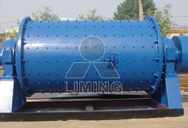
2020-5-28 The cement industry of Iran relates back to 1933, when the first cement plant was constructed in the south of Tehran. It was capable of producing just about 100 MT per day. In 1937, its output capacity was upgraded to 9000 MT per year. By the end of the 1970s, Iran cement
Read More
2016-7-8 Iran’s cement industry after the sanctions. The lifting of economic sanctions paves the way for an improved economic development in Iran. This article provides an overview of the economic outlook for Iran, the situation of the cement industry and the
Read More
Abyek cement co., in order to meet the demands of the market and also increasing the production capacity of the country as well as export to other countries, has optimized the first line of production and established a new line of production(no.3). production capacity enhancement of the first line, as the biggest cement capacity enhancement project in Iran and worldwide, from initial capacity of 3500
Read More
2021-6-20 the Momtazan cement plant in Kerman, Iran. The limestone obtained from quarries is transported to the crusher. Under the crusher, the primary riddled exists that the small broken stone in crusher shed on it. The suitable pieces of small stones that
Read More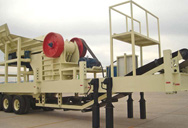
The calcination is the core phase of the cement making dry process. The calcination of the preheated raw meal takes place in the rotary kiln of the cement plant. The rotary kiln is a huge rotating furnace in which the raw meal is heated up to 1450 ⁰C and turned to clinker.
Read More
Cement Manufacturing Process. The cement manufacturing process starts with the mining of limestone that is excavated from open cast mines. Then this limestone is crushed to -80 mm size and is loaded in longitudinal stockpiles. Limestone is taken out diagonally from these stockpiles for grinding in raw mill hoppers. As mentioned earlier coal is used as a fuel to heat the raw materials in the cement
Read More
2020-11-18 Iran: Cement production rose by 14.4% year-on-year to 35.6Mt in the first half of the local calendar year that started in March 2020 from 31.1Mt in the same period in the previous year. The sector exported 5.8Mt of cement with a value of US$128m to 28 countries according to the Mehr News Agency.
Read More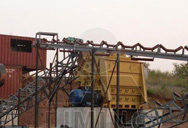
2021-5-30 have been identified in the emission from cement plants [14]. The main purpose of the present study was to evaluate the environmental impact caused by dust emissions from a cement plant in the Khash Region of Iran within adjacent area with no other air pollution source in the area. Khash city, with 60,000 inhabitants, lies about 45
Read More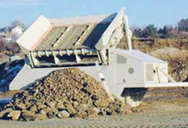
2020-5-28 June 23, 2019. The cement industry of Iran relates back to 1933, when the first cement plant was constructed in the south of Tehran. It was capable of producing just about 100 MT per day. In 1937, its output capacity was upgraded to 9000 MT per year. By the end of the 1970s, Iran cement
Read More
Iran’s cement industry after the sanctions. The lifting of economic sanctions paves the way for an improved economic development in Iran. This article provides an overview of the economic outlook for Iran, the situation of the cement industry and the kind of
Read More
Accordingly, in 1935 Another plant with capacity of 200 tons was purchased And in 1936 began its construction in the vicinity of the old factory And in 1937 began the operation of the second unit. Ordinary cement in Iran ... Cement manufacturing process.
Read More
CEO: Mr. Rouhi Plant Location : 25th Km of Ardebil-Astara Road, Ardebil province, Iran Plant Contact: +98(45) 32132901-5 Plant Fax: +98(45) 32132910 Commissioning Date : 1996 Nominal Capacity : 1,050,000 Tons of Cement per Year Main Shareholder : Espandar Cement Investment Company (PJS) Product Type : Portland cement Type 1-425, Portland cement Type 2, Portland Pozzolana cement,
Read More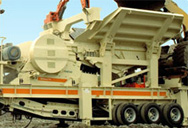
2017-5-26 Essay on Mobile Cement Plant Process Flow Chart The main raw materials used in the cement manufacturing process are limestone, sand, shale, clay, and iron ore. The main material, limestone, is usually
Read More
2016-5-25 2. Cement Manufacturing Process: The main component of cement is clinker, which is produced from raw materials, such as limestone and clay. [8]. Limestone supplies CaCO 3 for the cement production. Silica, alumina, and iron are considered to be other raw materials. The lime stone used for cement manufacturing contains 75-90 % of CaCo 3
Read More
The Ramla cement plant (see Fig. 1 for an aerial photo of the plant) has been in operation for 46 years. The original process at the Ramla cement plant to produce cement from limestone, which is the base material of cement, was a so-called wet line process. The original wet line had a
Read More
2021-6-11 network process (ANP) and the decision-making trial and the evaluation laboratory method in geographical information system (GIS) software to locate a wind power plant site in Iran [9]. Asakereh et al. applied a fuzzy analytical hierarchy process (AHP) with a GIS-based approach to locate appropriate solar energy sites in Iran [10]. Sozen et
Read More
2021-6-20 Cement - Cement - Extraction and processing: Raw materials employed in the manufacture of cement are extracted by quarrying in the case of hard rocks such as limestones, slates, and some shales, with the aid of blasting when necessary. Some
Read More
2009-4-27 processing units are crushers unit, raw mill, homogenizing plant, kiln system, cement mill and packing plant. Here, dry production process is used because energy consumption is less and running cost is also lower compared to other process. The raw materials used are in the following compositions; limestone 95-97% and laterite 3-5%.
Read More
Accordingly, in 1935 Another plant with capacity of 200 tons was purchased And in 1936 began its construction in the vicinity of the old factory And in 1937 began the operation of the second unit. Ordinary cement in Iran ... Cement manufacturing process.
Read More
Shargh White Cement Co. is one of the largest and latest white cement plants in Iran with a capacity of 1000 t/d. The plant is located in Mashhad, close to the mother company’s grey cement plant, Shargh Cement, which has a capacity of 7000 t/d.
Read More
2011-2-28 Iran is planning to invest $500 million in the construction of a new cement plant in Tajikistan. Ali Asghar Sherdoust, Iranian Ambassador to Tajikistan, said that a one million tonne per annum capacity plant will be constructed in Nosir Khusrav district, Khatlon province.
Read More
CEO: Mr. Rouhi Plant Location : 25th Km of Ardebil-Astara Road, Ardebil province, Iran Plant Contact: +98(45) 32132901-5 Plant Fax: +98(45) 32132910 Commissioning Date : 1996 Nominal Capacity : 1,050,000 Tons of Cement per Year Main Shareholder : Espandar Cement Investment Company (PJS) Product Type : Portland cement Type 1-425, Portland cement Type 2, Portland Pozzolana cement,
Read More
Multicriteria decision-making method is applied to select the alumina-cement plant location in the East-Azerbaijan province of Iran. The analytic hierarchy process is used to evaluate five alternative sites taking into account the most important factors: raw material transportation distance, water supply, power supply, and land consideration.
Read More
The Ramla cement plant (see Fig. 1 for an aerial photo of the plant) has been in operation for 46 years. The original process at the Ramla cement plant to produce cement from limestone, which is the base material of cement, was a so-called wet line process. The original wet line had a
Read More
2014-6-25 ranking cement producers in Iran and its product is type 2 Portland cement. Based on the writers’ knowledge, studies about the noise pollution from machinery and the noise exposure rate in the workers zones have not been well established for this industrial plant. A schematic diagram of the main process units in a cement factory has
Read More
2009-8-26 broader applicability. In this paper, the analytic hierarchy process (AHP) with 5 criteria is used to develop a location evaluation hierarchy for an alumina–cement plant in East Azerbaijan province of Iran. Five alternatives for the plant location are evaluated. The main criteria are transportation, water supply, power supply, fuel supply and ...
Read More
2016-5-25 2. Cement Manufacturing Process: The main component of cement is clinker, which is produced from raw materials, such as limestone and clay. [8]. Limestone supplies CaCO 3 for the cement production. Silica, alumina, and iron are considered to be other raw materials. The lime stone used for cement manufacturing contains 75-90 % of CaCo 3
Read More
2009-4-27 processing units are crushers unit, raw mill, homogenizing plant, kiln system, cement mill and packing plant. Here, dry production process is used because energy consumption is less and running cost is also lower compared to other process. The raw materials used are in the following compositions; limestone 95-97% and laterite 3-5%.
Read More
